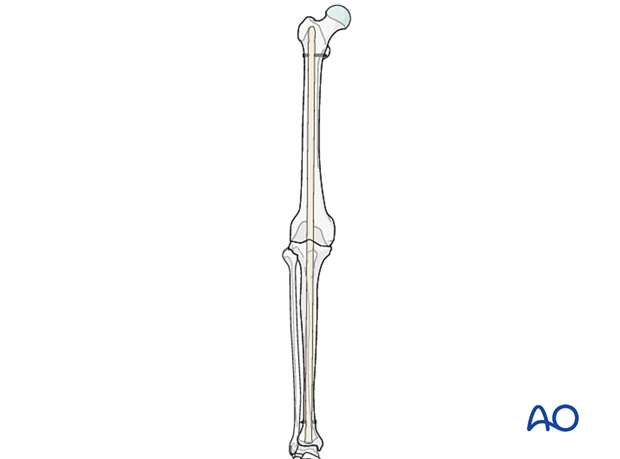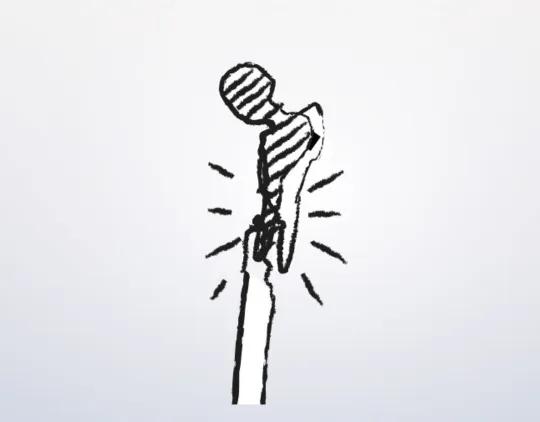Salvage techniques
1. Introduction
Fracture non-union, bone loss, joint instability, and infection may complicate treatment of periprosthetic fractures about a total knee.
In addition, many of these patients are elderly and may have multiple comorbidities which may complicate or preclude extensive reconstructions.
With careful consideration of patient needs, different salvage options exist.
2. Salvage techniques
If healing of a periprosthetic fracture has failed, and revision arthroplasty is precluded, knee arthrodesis or above knee amputation may be considered.
Knee arthrodesis
If infection is adequately treated or ruled out as a cause for complication, knee arthrodesis can be achieved. In the setting of minimal bone loss, the total knee replacement can be removed and intramedullary nail stabilization for arthrodesis can be used.

If there is extensive bone loss, the risks and benefits of staged management must be considered. This can be done by:
- Acute shortening followed by lengthening after healing of the arthrodesis site.
- A Masquelet procedure performed with staged bone grafting of the defect.
- A modular metallic intramedullary device for bone loss
- Shoe-lift for improved ambulation
In the setting of active infection, key components and treatment include infection control and soft tissue coverage. Arthrodesis can usually be achieved utilizing a multiplanar external fixator.
Patients who have undergone knee arthrodesis can function well. The affected limb is shortened to aid in ambulation during the swing phase of gait.

Above knee amputation
Where limb salvage efforts failed, in the form of non-union, infection, instability, or pain, a patient may consider above knee amputation. This may also be the treatment of choice for medically comorbid patients.
This procedure can be extremely complicated in patients who have undergone multiple surgeries on the limb, particularly if the patient has a revision total knee, distal femur stem in place. Consideration must be given to removal of a potentially ingrown device, and avoidance of intraoperative fracture of the femur. In addition, neovascularization can make blood loss difficult to control, and the length of the shortened extremity can preclude the use of a tourniquet. In this setting, use of intraoperative intravascular balloon tamponade of the external iliac artery may be considered.
Outcome of above knee amputations can be quite variable. Events technique including adductor myodesis and targeted muscle innervation can be employed to improve outcome. Many elderly patients do not utilize a prosthesis and become dependent as a result of this intervention. Younger patients with less medical comorbidities are more likely to benefit from prosthetic fitting and training.
Future consideration of osseous integration prosthesis may dictate the type of above knee amputation performed.













